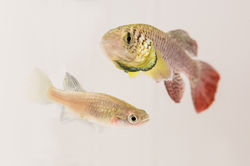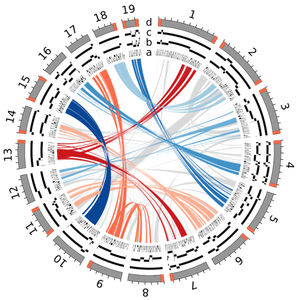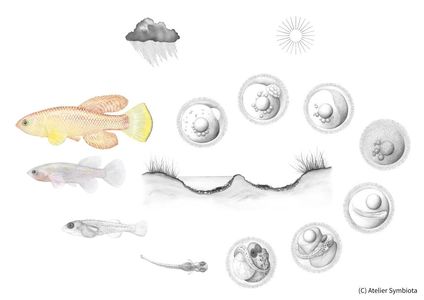Turquoise Killifish (Nothobranchius furzeri)
An exceptional African fish that helps us understand aging.
The N. furzeri inhabit transitory ponds in semi-arid areas of Southeastern Africa, where rain is rare and unpredictable. The fish have evolved in a number of ways to adapt to the regular disappearance of their habitat.
The dry seasons have led to the development of a dehydration resistant shell that surrounds the fertilised egg, therefore withstanding prolonged periods of drought. Additionally, the fish embryos enter a phase called "Diapause", a period where development slows and can last up to a year. When conditions become more suitable, growth will be triggered to a normal rate.
The limited rainfall in the African region means the N. furzeri has a naturally short life span of only a few months. This life expectancy does not change in optimal laboratory conditions, for that reason the N. furzeri makes a promising short-lived model organism for aging research.
Aging in time lapse: It's in the genes...
The N. furzeri has adapted perfectly to its extreme living conditions. They only live a few months - but they are aging at the same time as other vertebrates. In time lapse, they lose their colour, regenerate worse, the organ functions diminish, they lose muscle mass; develop a hunchback or even cancer. As an aging model, the small fish provides the opportunity to determine the influence of genetic factors or the effects from the environment on the aging process of vertebrates in a single, short time.
There are several strains of the N. furzeri, each with a different life span. The very short lived GRZ-strain, being collected in the Gonarezhou National Park, shows a life span of only 3 month. The longer lived strains MZSC-08/122 and MZM 0410, collected in more humid areas show a life span of up to one year.
Due to this, the N. furzeri is well suited to help decipher the influence of genetics on the life span of vertebrates.



The FLI was one of the first institutes to develop the genetic and genomic bases to establish the N. furzeri as a model in aging research.
As an aging model, N. furzeri helps us investigate:
- Organ regeneration
- Stress and aging
- Genetic influence on aging.
Contact
Dr. Uta Naumann
Head Animal Facility Fish
+49 3641 656695
uta.naumann@~@leibniz-fli.de










